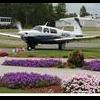Ditching at Night....are you prepared for it?
-
Members Online
- acekng1
- Nico1
- Igor_U
- MDMooney
- kortopates
- haymak3r
- fdc7169
- TCC
- IvanP
- redbaron1982
- Medicpilot
- mooniac58
- nelcardella
- jeff.reynoljm
- InJuRo
- Crawfish
- Kevin Gill
- Iceman7004
- Jim F
- Ethan
- Tom F
- Garmin Aviation Team
- takair
- FlightSmith
- Wooly
- banjo
- Matt103187
- hammdo
- KSMooniac
- Danb
- Flyler
- PT20J
- Brian2034
- 1967 427


Recommended Posts
Join the conversation
You can post now and register later. If you have an account, sign in now to post with your account.